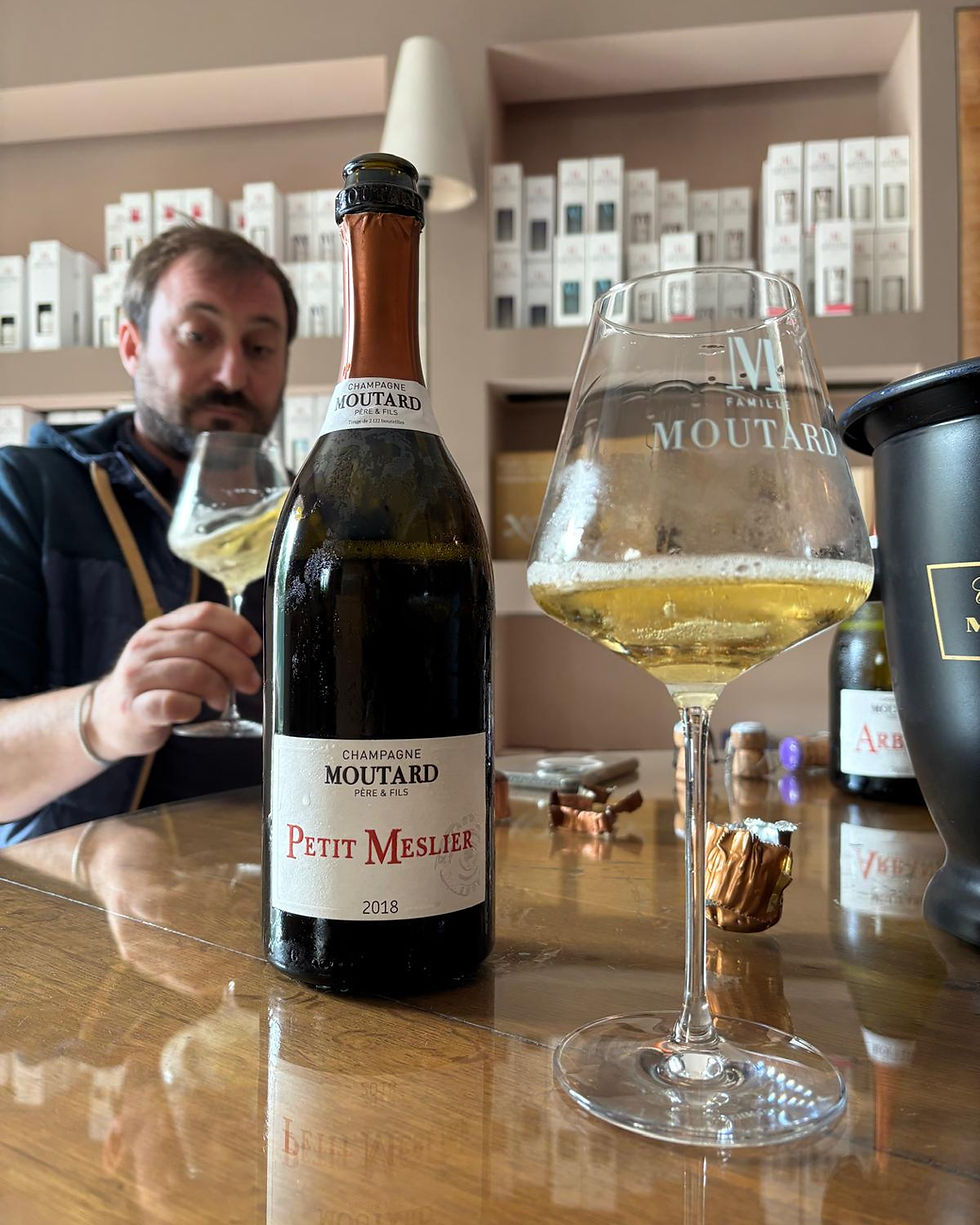Champagne Hautbois: The Rising Star of the Massif de Saint-Thierry
- Lucy Edwards

- Sep 9
- 4 min read
Updated: Sep 11
In Pévy, a small village tucked into the rolling slopes of the Massif de Saint-Thierry, Fabien Hautbois is quietly rewriting expectations of what champagne from this northern terroir can be. At Champagne Hautbois, he works with an unusual mix of vessels, oak, acacia, and clay amphora, and an equally unusual mix of grapes, reviving forgotten varieties and challenging the dominance of the “big three.” His cellar holds an extraordinary treasure: hundreds of magnums of reserve wine, fermented in a style inspired by Bollinger’s famed “quart de mousse,” yet scaled to his small family domaine. Over the next few years, these will form the backbone of Hautbois’ most exciting releases. I sat down with Fabien to taste some vins clairs and talk about terroir, rare grapes, and the slow, deliberate patience behind truly distinctive champagne.


The terroir of Pévy is central to your wines. What is Pévy like as a place to grow vines, and how does it fit within the Massif de Saint-Thierry?
Fabien: Pévy sits in the Massif de Saint-Thierry, the northernmost winegrowing area in Champagne, just seven kilometres from Reims. It’s a landscape where vineyards and forests sit side by side, like a green amphitheatre. Historically, this was the “Montagne de Saint-Thierry,” famous for its wines as far back as the 12th century, when they were exported through the markets of Hermonville and Cormicy.
My family has been here for five generations. My father, Jean Pol Hautbois, founded the village cooperative in 1976, named Champagne Jean Pol Hautbois. In 2012, my sister Sandrine and I began creating our own label, Champagne Hautbois, from some of our best plots, bringing together modern winemaking ideas with the deep-rooted traditions of our village. It’s a way of showing the full potential of Pévy’s terroir, while staying true to the heritage we’ve inherited.
The plots we have selected face mostly south, with well-drained soils full of fossilised shells that warm quickly in spring, sandy loam over chalk, giving both ripeness and freshness. The Massif has a slightly cooler climate than the Montagne de Reims, which helps preserve acidity, and a higher proportion of Pinot Noir and Meunier, a legacy from when the area was a major source of still red wine for Champagne. For me, Pévy offers elegance and lift, with floral notes and supple fruit, but always underpinned by that Massif signature: a fine, almost airy balance between generosity and freshness.
The stunning amphitheatre of vines and subsoil full of fossilised shells.
The two cuvées which best represent the terroir of the village are La Porte Goliva and Les Leurys. These single plot cuvées come from opposit sides of the village, Les Leury is planted in 100% Chardonnay, and La Porte Goliva is 100% Meunier (it is named after the gate to Pévy which was fortified in the middle ages). Both cuvées are non vintages aged in oak, blended with a solera single plot solera dating back four years now. As time goes by, these releases will get even more complex and expressive.


Your winemaking embraces a wide range of vessels: oak, acacia, and amphora. How do they influence your wines?
Fabien: Oak is my mainstay, mostly old barrels, because I’m not looking for strong vanilla notes but for the micro-oxygenation that helps the wine evolve gracefully. Acacia is more unusual in Champagne, and I like it for certain white grape parcels because it keeps the freshness without the toastiness of oak. Amphora is a different story: it gives a pure, almost crystalline expression of fruit and terroir, because there’s no flavour pickup from the vessel. I have an amphora specifically for my forgotten grapes, and I want to share the great potential that these rare grapes have.
For me, using these different materials is like having a painter’s palette. I might vinify the same vineyard in oak and amphora, then blend them to create more layers of texture and aroma.


You’ve been planting forgotten grape varieties. Why is this important to you, and how do you see them shaping the future of Champagne?
Fabien: First, because it’s part of our heritage. Grapes like Arbanne, Petit Meslier, Pinot Blanc, or Pinot Gris were once much more common here, and they bring qualities we’re going to need in the future, especially with climate change. Arbanne, for example, has naturally high acidity even in warm years, while Petit Meslier can give incredible aromatics. They also create blends with more complexity and resilience. I’m not interested in reviving them just for the sake of rarity; I see them as tools for making balanced, distinctive wines in the decades ahead.

What can we expect from Champagne Hautbois in the coming years?
Fabien: Patience, and magnums! Over the past years I’ve been building up a reserve of wines fermented in magnum, in the style known as “quart de mousse” or "petite mousse" which is used by famous houses like Bollinger and AR Lenoble. This method entails bottling reserve wines with a quarter of the normal amount of sugar for a full fermentation. This creates a limited fermentation which allows for mico-oxygentation to preserve the wine. For a small estate, it’s quite a commitment. When I spoke to some of the team at Bollinger, they were genuinely surprised at how much I’d set aside, for them it’s normal, but for me it’s a big investment of space, wine, and time.
These magnum reserves add a depth and richness that you can’t get any other way. You’ll start to see them in the blends from the next release, but the real impact will come over the next two to four years. For me, it’s about leaving a signature, a generosity and complexity that says, unmistakably, “this is Hautbois.”




.jpg)





























Comments